Though the field of medicine continues to advance and branch out in so many ways, nutritionists and health experts continue to praise the benefits of certain foods. In fact, eating healthfully has been shown to reduce the risk of obesity, cardiovascular illnesses and even certain types of cancer.1
However, understanding which foods to eat for specific benefits can sometimes be difficult, which is why Medical News Todaypreviously supplied a list of the top 10 healthy foods.
Now, MNT specifies the health benefits of a much wider range of foods, providing a cornucopia of delicious and nutritious options for individuals who wish to boost their health by eating healthfully.
Below is a list of the food products along with information regarding their potential health benefits. Note that this article contains summaries and you should click through to read individual articles containing the full list of possible health benefits.
Almonds
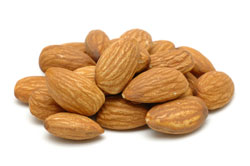
Almonds are a rich source of vitamin E, copper, magnesium, good quality protein, and healthy unsaturated fatty acids.
Studies have revealed that almonds can potentially help prevent cardiovascular heart diseases2, cut the risk of cancer3, and help prolong life.4
Read more about almonds.
Apples

Apples are sometimes called "nutritional powerhouses" because of their impressive nutritional profile.
Apples are rich in Vitamin C (a powerful natural antioxidant), B-complex vitamins, dietary fiber, phytonutrients (which help protect the body from the detrimental effects of free radicals), and minerals such as calcium and potassium.5
Studies have revealed that eating apples can potentially help prevent dementia6, reduce your risk of stroke7, and reduce your risk of diabetes8
Read more about apples.
Arugula

Along with other leafy greens, arugula contains very high nitrate levels (more than 250 mg/100 g). High intakes of dietary nitrate have been shown to lower blood pressure, reduce the amount of oxygen needed during exercise and enhance athletic performance.
The potential health benefits of arugula include lowering risk of cancer, preventing osteoporosis and improving muscle oxygenation during exercise.
Read more about arugula.
Asparagus

Asparagus is very rich in dietary fiber and contains high levels of vitamin B6, calcium, zinc and magnesium.
The potential health benefits of asparagus include: reducing the risk of diabetes, preventing kidney stones, and reducing the risk of neural tube defects in babies.
Read more about asparagus.
Bananas
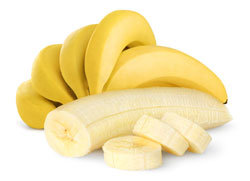
Bananas are naturally free of fat, cholesterol and sodium and is very rich in potassium.
The potential health benefits of bananas include: lowering blood pressure,reduce the risk of developing childhood leukemia, and supporting heart health.
Read more about bananas.
Basil
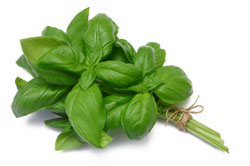
Basil is rich in vitamin A, vitamin K, vitamin C, magnesium, iron, potassium, and calcium.
Studies have revealed that basil can potentially reduceinflammation and swelling9, prevent the harmful effects of aging10, and may be useful in treating arthritis and inflammatory bowel diseases.11
Read more about basil.
Beetroot

Beetroot, also known simply as the beet, has been gaining in popularity as a new super food due to recent studies claiming that beets and beetroot juice can improve athletic performance, lower blood pressure and increase blood flow.
Beetroot is a rich source of folate and manganese and also contains thiamine, riboflavin, vitamin B-6, pantothenic acid, choline, betaine, magnesium, phosphorus, potassium, zinc, copper and selenium.
Read more about beetroot.
Bok choy
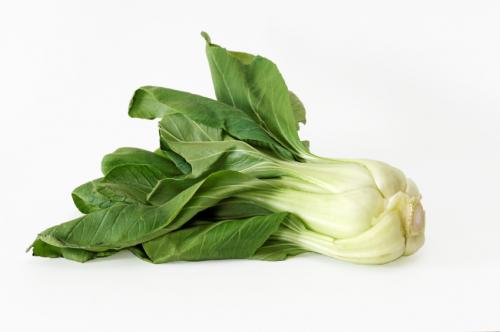
Bok choy belongs to the cruciferous vegetable family, which also includes kale, broccoli, cauliflower, Brussels sprouts, cabbage, collard greens, rutabaga and turnips.
These nutrition powerhouses supply loads of nutrients for littlecalories. If you are trying to eat healthier, cruciferous vegetables like bok choy should be at the very top of your grocery list.
Read more about bok choy.
Broccoli
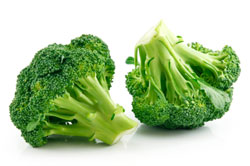
Broccoli contains high levels of fiber (both soluble and insoluble) and is a rich source of vitamin-C.
In addition, broccoli is rich in vitamin A, iron, vitamin K, B-complex vitamins, zinc, phosphorus and phyto-nutrients.
Studies have found that broccoli can potentially help prevent osteoarthritis12, protect your skin against the effects of UV light13, reverse diabetes heart damage14, and reduce bladder cancer risk.15
Read more about broccoli.
Cantaloupe

Cantaloupes are also commonly known as muskmelons, mush melons, rock melons and Persian melons. They are a member of the botanical family Cucurbitaceae, along with honeydew and watermelons.
Cantaloupe contains an abundance of antioxidants including choline, zeaxanthin, and beta-carotene, all of which provide protection against a range of diseases and conditions from the common cold to cancer.
Potential health benefits of cantaloupe include lowering risk of developing asthma, managing blood pressure, aiding digestion, keeping hydrated and reducing inflammation.
Read more about cantaloupe.
Carrots
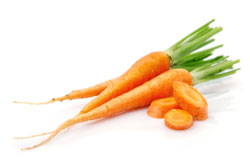
Carrots are a great source of vitamin A. They provide 210% of the average adult's needs for the day.
The potential health benefits of carrots include: preventing lung cancer16, destroying leukemia cells and inhibiting their progression17, and helping to restore vision.18
Read more about carrots.
Cauliflower

As part of the brassica family, more commonly known as cruciferous vegetables, cauliflower contains antioxidants and phytonutrients that can protect against cancer, fiber that helps with satiety, weight loss and a healthy digestive tract, choline that is essential for learning and memory as well as many other important nutrients.
The potential health benefits of cauliflower include preventing mutations and reducing stress from free radicals, preventingconstipation and helping memory.
Read more about cauliflower.
Celery
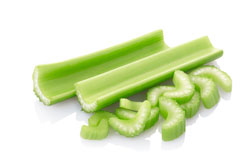
Celery is a very rich source of antioxidants and vitamin K.
The potential health benefits of celery include: lowering blood pressure, preventing cancer, and soothing joint pain.
Read more about celery.
Chickpeas

Originally cultivated in the Mediterranean and the Middle East, chickpeas, also known as garbanzo beans, have spread their culinary influence to areas all over the world.
The potential health benefits of chickpeas include improved glucose levels, lipids and insulin levels for diabetes, maintaining bone strength and heart health.
Read more about chickpeas.
Chives

Chives are a nutrient-dense food, meaning that while they are low in calories they are high in beneficial nutrients like vitamins, minerals and antioxidants.
The potential health benefits of chives include: potential beneficial and preventative effects against cancer, prostate cancer, esophageal and stomach cancer and positive effects on sleep and mood.
Read more about chives.
Chocolate

Chocolate is rich in antioxidants. Despite its bad reputation for causing weight gain, there are a number of health benefits being associated with its consumption.
The potential benefits of eating chocolate are said to include: lowering cholesterol levels, preventing cognitive decline, and reducing the risk of cardiovascular problems.
Read more about chocolate.
Cilantro

Often known in the UK as coriander, cilantro comes from the plantCoriandrum sativum. In the United States, the leaves of the plant are referred to as cilantro (the Spanish translation) and the seeds are referred to as coriander.
Many studies have suggested that increasing consumption of plant foods like cilantro decreases the risk of obesity, overall mortality, diabetes and heart disease while promoting a healthy skin and hair, increased energy and overall lower weight.
Read more about cilantro.
Cinnamon

Studies have found that cinnamon can potentially be effective against HIV19, improve glucose and lipids levels in patients with type 2 diabetes20, help prevent Alzheimer's disease,21 and stop the destructive process of multiple sclerosis (MS).22
In addition, researchers at Penn State found that consuming cinnamon can help reduce the body's negative responses to eating high-fat meals.23
Read more about cinnamon.
Coffee

Coffee is one of the main sources of antioxidants in the U.S.
The potential health benefits of drinking coffee include: protecting against type 2 diabetes24, preventing Parkinson's disease25, lowering the risk of liver cancer26, preventing liver disease27, and promoting good heart health.28
Read more about coffee.
Collard greens

Collard greens are part of the cruciferous vegetable family, which also includes kale, broccoli, brussels sprouts, cabbage, rutabaga and turnips.
Collard greens are an extremely rich source of vitamin K and also contain folate, thiamin, niacin, pantothenic acid, choline, phosphorus and potassium.
Health benefits of collard greens may include assisting with bone health, reducing cancer risk, helping lower glucose levels in those with diabetes and improving sleep and mood.
Read more about collard greens.
Cranberries

Cranberries are a good source of vitamin C, fiber and vitamin E.
Studies have found that cranberries can potentially be effective at reducing the risk of cardiovascular disease (CVD)29, slowing tumorprogression30, preventing urinary tract infections31, and can benefit oral health by preventing bacteria from binding to teeth.
Read more about cranberries.
Edamame

Edamame is a young soybean that has been harvested before the beans have had a chance to harden. You can buy them shelled or in the pod, fresh or frozen.
The potential health benefits of edamame include maintaining the correct blood pressure, helping with depression, promoting fertility and decreasing bone loss.
Read more about edamame.
Eggplant

The eggplant, also known as aubergine, garden egg, guinea squash, melongene and brinjal, is usually distinguishable by its signature egg-like shape and vibrant purple color.
The potential health benefits of eggplant, include supporting heart health, maintaining weight and blood cholesterol levels and exhibiting anti-cancer effects.
Read more about eggplant.
Flaxseed
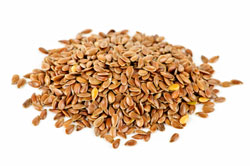
Flaxseed is not only "an excellent source of two fatty acids that are essential for human health - linoleic acid and alpha-linolenic acid," but also "an excellent source of fiber and a good source of minerals and vitamins", according to the American Nutrition Association.32
The potential health benefits associated with flaxseed include: lowering cholesterol33, protecting against cancer34, preventing hot flashes35, and improving blood sugar levels.36
Read more about flaxseed.
Garlic
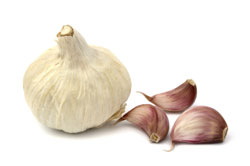
Garlic is widely used for several conditions linked to the blood system and heart.
Studies have found that garlic can potentially be a very powerfulantibiotic37, help protect the heart during cardiac surgery and after a heart attack38, lower the risk of developing lung cancer39, and reduce high cholesterol and blood pressure levels.40
Read more about garlic.
Ginger
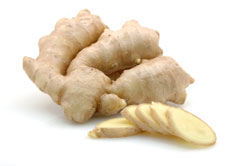
Ginger contains a chemical which is used as an ingredient in antacid, laxative and anti-gas medications.
Studies have found that ginger can potentially prevent inflammation of the colon43, reduce exercise-induced muscle pain44, help alleviate nausea caused by chemotherapy45, and reduce the severity of period pains.46
Read more about ginger.
Grapes
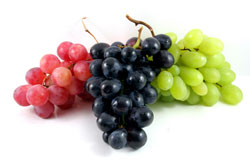
The portability, texture, flavor and variety of grapes have made them a popular finger food in countries all over the world.
Studies have associated grapes with the prevention of cancer, heart disease, high blood pressure and constipation as well as decreasing the risk of obesity and overall mortality.
Read more about grapes.
Grapefruit

Grapefruits are low in calories but full of nutrients. They support clear, healthy skin, help to lower our risk for many diseases and conditions and may even help with weight loss as part of an overall healthy and varied diet.
The potential health benefits of grapefruit include boosting weight loss, maintaining healthy blood pressure and heart health and combating free radicals.
Read more about grapefruit.
Green Tea
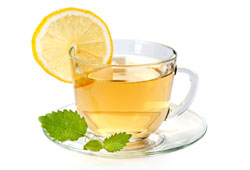
Green tea may well be one of the world's healthiest drinks and contains the highest amount of antioxidants of any tea.
Studies have found that drinking green tea is associated with a reduced risk of stroke41, and may help fight prostate cancer.42
Read more about green tea.
Honey
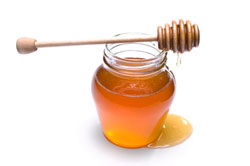
Honey possesses antiseptic and antibacterial properties.
Studies have found that honey can potentially help prevent GERD(gastroesophageal reflux)47, shorten the duration of bacterialdiarrhea48, help heal burns49, minimize seasonal allergies50, and fight off infections.51
Read more about honey.
Kale
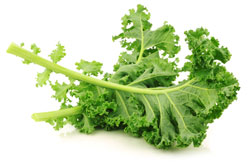
Kale is a great source of vitamin K, vitamin A, beta carotene, calcium, and vitamin C.
The potential health benefits of kale include: reducing the risk of certain cancers, lowering the risk of coronary artery disease, and lowering levels of bad cholesterol.
Read more about kale.
Kiwifruit
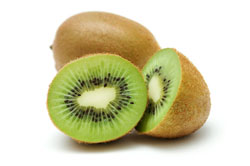
Kiwis are a nutrient dense food, meaning they are high in nutrients and low in calories. The kiwifruit is higher in vitamin C per ounce than most other fruits.
The potential health benefits of eating kiwis include: maintaining healthy skin tone and texture, reducing blood pressure and preventing heart disease and stroke.
Read more about kiwifruit.
Mango

The mango is a member of the drupe family, a type of plant food in which an outer fleshy part surrounds a shell (what we sometimes call a pit) with a seed inside. Olives, dates and coconuts are also types of drupes.
Many studies have suggested that increasing consumption of plant foods like mangoes decreases the risk of obesity and overall mortality, diabetes, heart disease and promotes a healthy complexion and hair, increased energy, overall lower weight.
Read more about mango.
Milk
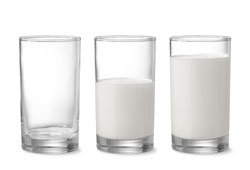
Dairy products like milk are the best dietary sources of calcium. Calcium has many functions in the body but its primary job is the development and maintenance of healthy bones and teeth. Calcium is also important for blood clotting and wound healing, maintaining normal blood pressure, and muscle contractions including heartbeat.
Milk also provides magnesium, phosphorus, vitamins A, riboflavin, vitamin B-6 and vitamin B-12.
The potential health benefits of milk include: maintaining bone, blood pressure and heart health and providing an increase invitamin D. Deficiency in vitamin D has been associated with depression, chronic fatigue and PMS.
Read more about milk.
Milk alternatives
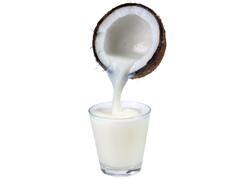
There are many reasons you might search for an alternative for dairy, the most common being allergies, lactose intolerance and following a vegan diet.
Some people choose to not consume dairy in order to follow a vegan diet, which avoid any foods that come from an animal, including milk, cheese, eggs and honey. Others may cut dairy out of their diet in order to avoid hormones and antibiotics in conventional milk, as an acne treatment, or when following the popular "Paleo" diet.
Soy isoflavones have been shown to be beneficial in preventing heart disease and at least 10mg per day can decrease breast cancerrecurrence by 25%. Increased soy consumption may be beneficial for menopausal women.
Read more about alternatives to milk.
Mint

Mint, also known as mentha, is actually a genus or group of around 15-20 types of plants including peppermint and spearmint. Mint oil is often used in toothpaste, gum, candy and beauty products while the leaves are used either fresh or dried for teas and food.
Mint has one of the highest antioxidant capacities of any food. Mint has possible positive effects on allergies, common cold, indigestion,irritable bowel syndrome (IBS) and skin.
Read more about mint.
Mushrooms

Mushrooms, though classified as vegetables in the food world, are not technically plants. They belong to the fungi kingdom and although they are not vegetables, mushrooms provide several important nutrients.
The potential health benefits of mushrooms including assisting in inhibiting the growth of cancer cells, regulating blood pressure and improving immune response to infection.
Read more about mushrooms.
Oats

Oats contain high levels of a type of fiber known as beta-glucan. Beta-glucan is known to help lower levels of bad cholesterol.
The potential health benefits of oats include: reducing the risk of coronary artery disease, lowering the risk of colorectal cancer, and lowering blood pressure.
Read more about oats.
Oily fish
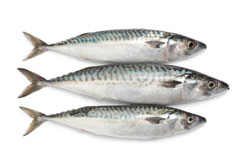
Oily fish, such as salmon or mackerel, are an excellent source ofomega-3 oils and lean protein.
Potential health benefits of eating oily fish include: preventing cardiovascular disease52, reducing your risk of rheumatoid arthritis53, boosting infant sensory, cognitive, and motor development54, improving memory55, protecting vision56, and preventing oral and skin cancers.57
Read more about oily fish.
Olive oil
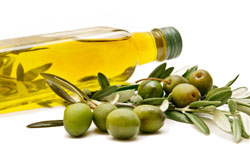
People who regularly consume olive oil are at a lower risk of developing cardiovascular diseases, including hypertension (high blood pressure), stroke, and hyperlipidemia (high blood cholesterol and triglyceride levels).58
In addition, olive oil intake may help treat inflammation, endothelial dysfunction (problems with the inner linings of blood vessels), thrombosis and carbohydrate metabolism.58
Read more about olive oil.
Onions

Onions can vary in size, shape, color and flavor. The most common types are red, yellow and white onion. Flavors can vary from sweet and juicy with a mild flavor to sharp, spicy, and pungent, often depending on the season in which they are grown and consumed. It is estimated that 105 billion pounds of onions are harvested each year worldwide.
The possible health benefits of consuming onions include lowering the risk of several types of cancer, improving mood and maintaining the health of skin and hair
Read more about onions.
Oranges
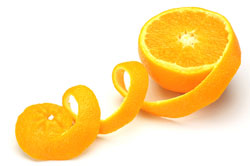
An orange has over 170 different phytochemicals and more than 60 flavonoids, many of which have been shown to have anti-inflammatory properties and strong antioxidant effects.
Oranges also contain thiamin, riboflavin, niacin, vitamin B-6, folate, pantothenic acid, phosphorus, magnesium, manganese, selenium and copper. Because of their high vitamin C content (over twice the daily need) oranges are associated with boosting the immune system.
Read more about oranges.
Oregano
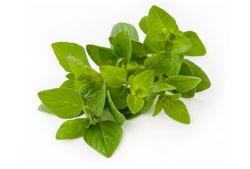
Oregano is a rich source of vitamin K and dietary antioxidants.
Studies have found that oregano has antimicrobial activity59, anti-inflammatory properties60, and components in oregano may help slow down or prevent the progression of disease in patients with breast cancer.61
Read more about oregano.
Papaya

Papayas grow in tropical climates and are also known as papaws or pawpaws.
The possible health benefits of consuming papaya include a reduced risk of heart disease, diabetes, cancer, aiding in digestion, improving blood glucose control in diabetics, lowering blood pressure, and improving wound healing.
Read more about papaya.
Peaches
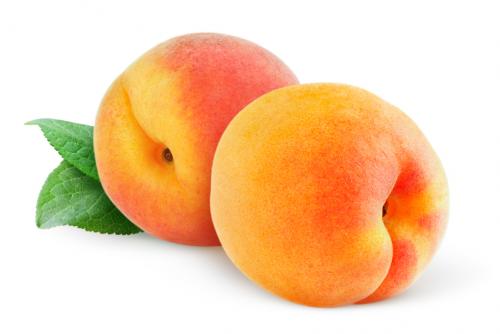
Peaches are a characteristically fuzzy fruit native to northwest China. They are a member of the stone fruit family, meaning that they have one large middle seed, along with cherries, apricots, plums and nectarines.
One medium peach contains 2% or more daily value of vitamins E and K, niacin, folate, iron, choline, potassium, magnesium, phosphorus, manganese, zinc and copper. They have been shown to ward off obesity-related diseases such as diabetes, metabolic syndrome and cardiovascular disease.
Read more about peaches.
Peppermint
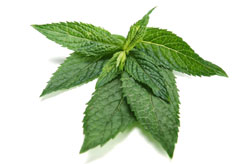
Peppermint is used as a traditional or folk remedy for several conditions and illnesses because of its calming effects.
The potential health benefits of peppermint include: treating the symptoms of irritable bowel syndrome (IBS)62, calming skin irritation and itchiness, preventing the onset of headaches and associated symptoms.63
Read more about peppermint.
Pineapple

Pineapple is a source of important vitamins and minerals such as thiamin, riboflavin, vitamin B-6, folate, pantothenic acid, magnesium, manganese and potassium and antioxidants and polyphenols, such as beta-carotene.
Fresh pineapple is the only known source of an enzyme called bromelain, which has been used in studies to determine it's effectiveness in alleviating joint pain, arthritis, reduce inflammation, inhibit tumor growth and shorten recovery time following plastic surgery.
Read more about pineapple.
Potatoes

Along with the tomato and eggplant, the potato plant belongs to the nightshade family, of which some species are truly poisonous. Today potatoes are one of the cheapest universal crops to produce and are available year-round.
The health benefits of consuming potatoes include maintaining bone structure, supporting heart health, reducing chronic inflammation and preventing constipation.
Read more about potatoes.
Pumpkin

Pumpkin is an extremely nutrient dense food, meaning it is chock-full of vitamins and minerals but low on calories. There are many creative ways pumpkin can be incorporated into your diet, including desserts, soups, salads, preserves and even as a substitute for butter.
The potential health benefits of pumpkin including supporting heart health, eye health, promoting fertility and giving immunity a boost.
Read more about pumpkin.
Quinoa

Nutritionally, quinoa is considered a whole grain. Whole grains include the entire intact grain seed without removing any of its parts. In contrast, when grains are milled or refined like white breads, white rice, and white pasta, they have been processed to create a finer, lighter texture.
Consuming 2-3 servings of whole grain foods per day can reduce the risk of cardiovascular disease, type 2 diabetes, high blood pressure, colon cancer and obesity. Many studies have shown that as whole grain intake increases, the risk for all five of these lifestyle-related conditions decreases.
Read more about quinoa.
Rosemary
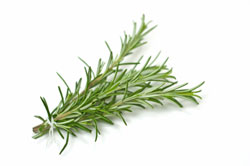
Rosemary is a rich source of antioxidants and anti-inflammatory compounds.
Studies have found that rosemary may potentially help treat indigestion64, enhance memory and concentration65, provide neurological protection66, and provide protection against macular degeneration.67
Read more about rosemary.
Sage
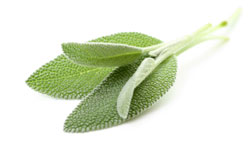
Sage is rich in antioxidants (apigenin, diosmetin, and luteolin) and important nutrients, such as vitamin K.
Studies have found that sage may potentially improve memory and information processing among people who suffer from mild Alzheimer's disease68, and help lower cholesterol and triglyceride levels in patients with diabetes type 2.69
Read more about sage.
Spearmint

Spearmint contains high amounts of vitamins, antioxidants and other vital nutrients.
Studies have found that spearmint may potentially have antioxidant and antifungal properties70, reduce symptoms of nausea and other digestive problems71, and treat hirutism (abnormal hair growth).72
Read more about spearmint.
Spinach

Spinach one of the best sources of dietary magnesium and calcium.
The potential health benefits of spinach include: helping manage diabetes, helping preventing cancer, reducing the risk of asthma, lowering the risk of blood pressure, and improving bone health.
Read more about spinach.
Strawberries
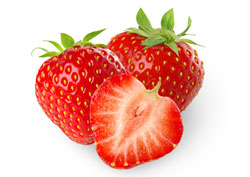
Strawberries are one of the most popular, refreshing and healthy treats on the planet and contain many vitamins and antioxidants that can be beneficial for your health.
The potential health benefits of strawberries include: reducing the risk of heart disease, stroke, cancer, blood pressure, constipation, allergies, diabetes and depression.
Read more about strawberries.
Sweet potatoes

Sweet potatoes pack a powerful nutritional punch. They have got over 400% of your daily needs for vitamin A in one medium spud, as well as loads of fiber and potassium.
The potential health benefits of sweet potatoes include a protective role against prostate cancer, promoting fertility, boosting immunity and supporting vision.
Read more about sweet potatoes.
Thyme
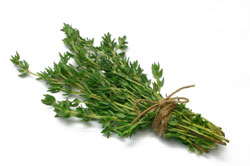
Thyme preparations may be more effective than acne prescription creams, according to scientists at Leeds Metropolitan University in England.73
Studies have found that thyme may potentially protect against hypertension74, help fight off foodborne bacterial infections75, and induce cell death in the breast cancer cells.76
Read more about thyme.
Tofu

Tofu, made from soybean curds, is naturally gluten-free and low calorie, contains no cholesterol and is an excellent source of protein, iron, and calcium.
The isoflavones (a type of compound called phytoestrogens) in soy foods have been linked to a decreased risk for osteoporosis, while the calcium and magnesium in soy may help to lessen PMS symptoms, regulate blood sugar and prevent migraine headaches.
Read more about tofu.
Tomatoes
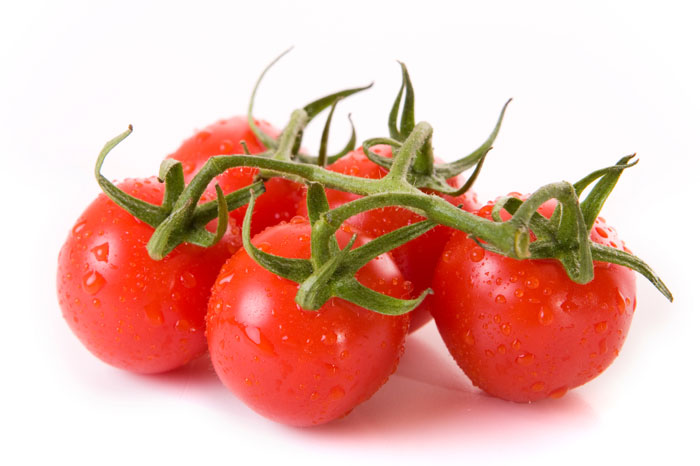
The tomato has been referred to as a "functional food," a food that goes beyond providing just basic nutrition, additionally preventing chronic disease and delivering other health benefits, due to beneficial phytochemicals such as lycopene.
Tomatoes are a rich source of vitamins A and C and folic acid. Tomatoes contain a wide array of beneficial nutrients and antioxidants, including alpha-lipoic acid, lycopene, choline, folic acid, beta-carotene and lutein.
The benefits of consuming fruits and vegetables of all kinds, including tomatoes, are infinite. As plant food consumption goes up, the risk of heart disease, diabetes, and cancer goes down.
Read more about tomatoes.
Watermelons
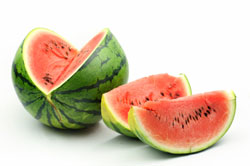
Watermelon contains thiamin, riboflavin, niacin, vitamin B-6, folate, pantothenic acid, magnesium, phosphorus, potassium, zinc, copper, manganese, selenium, choline, lycopene and betaine. According to the National Watermelon Promotion Board, watermelon contains more lycopene than any other fruit or vegetable.
The possible health benefits of watermelon include asthma prevention, reduction of high blood pressure, regulation of digestion, inflammation reduction, promoting healthy hair and skin.
After being in relationship with Wilson for seven years,he broke up with me, I did everything possible to bring him back but all was in vain, I wanted him back so much because of the love I have for him, I begged him with everything, I made promises but he refused. I explained my problem to someone online and she suggested that I should contact a spell caster that could help me cast a spell to bring him back but I am the type that don't believed in spell, I had no choice than to try it, I meant a spell caster called Dr Zuma zuk and I email him, and he told me there was no problem that everything will be okay before three days, that my ex will return to me before three days, he cast the spell and surprisingly in the second day, it was around 4pm. My ex called me, I was so surprised, I answered the call and all he said was that he was so sorry for everything that happened, that he wanted me to return to him, that he loves me so much. I was so happy and went to him, that was how we started living together happily again. Since then, I have made promise that anybody I know that have a relationship problem, I would be of help to such person by referring him or her to the only real and powerful spell caster who helped me with my own problem and who is different from all the fake ones out there. Anybody could need the help of the spell caster, his email: spiritualherbalisthealing@gmail.com or call him +2349055637784 you can email him if you need his assistance in your relationship or anything. CONTACT HIM NOW FOR SOLUTION TO ALL YOUR PROBLEMS'
ReplyDelete